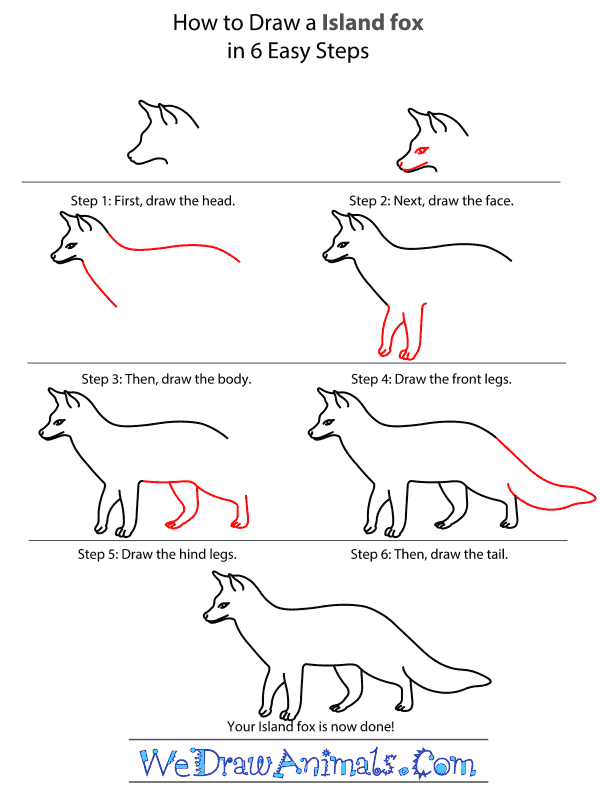In this quick tutorial you'll learn how to draw an Island Fox in 6 easy steps - great for kids and novice artists.
The images above represent how your finished drawing is going to look and the steps involved.
Below are the individual steps - you can click on each one for a High Resolution printable PDF version.
At the bottom you can read some interesting facts about the Island Fox.
Make sure you also check out any of the hundreds of drawing tutorials grouped by category.
How to Draw an Island Fox - Step-by-Step Tutorial
Step 1: Draw the head. First, start with the outline of the head, and then add the ears.
Step 2: Draw the eye, and then a line for the mouth
Step 3: Extend the neck into the body. One line goes straight diagonally from the neck down, while the back line is more curved.
Step 4: Draw the front legs. Make sure to draw lines to separate the paws.
Step 5: Draw the back legs, which are similar to the front legs.
Step 6: Finally, draw the tail
Interesting Facts about the Island Fox
Found only on six of the Channel Island off the coast of Southern California, the Island Fox is made up of six subspecies one on each island where they’re found. They are one of the smallest canid species in the world, descended from the gray fox, its believed they “rafted” to the islands thousands of years ago.
Did you know?
- Island Foxes are the Channel Islands largest native mammal species.
- Island Foxes are the only carnivore that is unique to California.
- The longest recorded lifespan of an Island Fox was 15 years.
- Island Foxes communicate through growls and barks but use facial expressions to show signs of dominance or submission.
- The Chumash Indians considered the Island Fox to be a sacred animal, a pet of the sun and a dream helper.
Lesson plan note: Island Foxes are made up of six subspecies with small differences between each one. Break students into six groups and have each group list the unique features of one Island Fox species. Then as a class compare and contrast the difference between each groups findings and discuss why they’re different.







